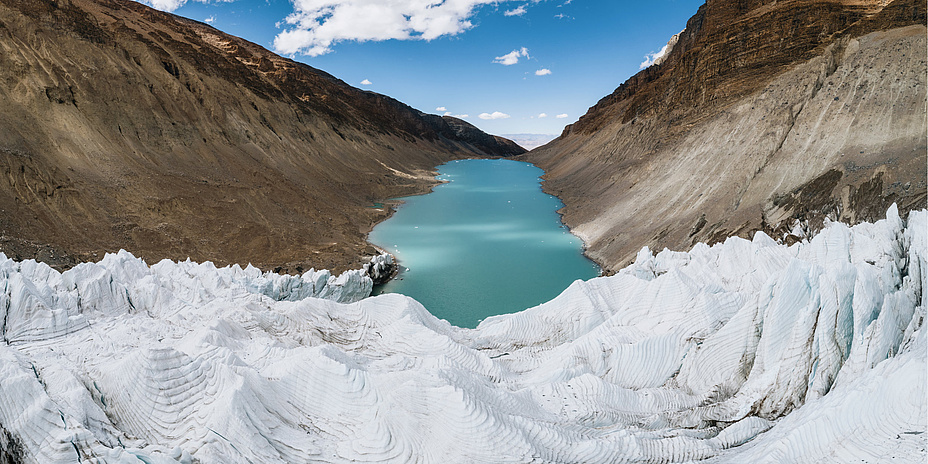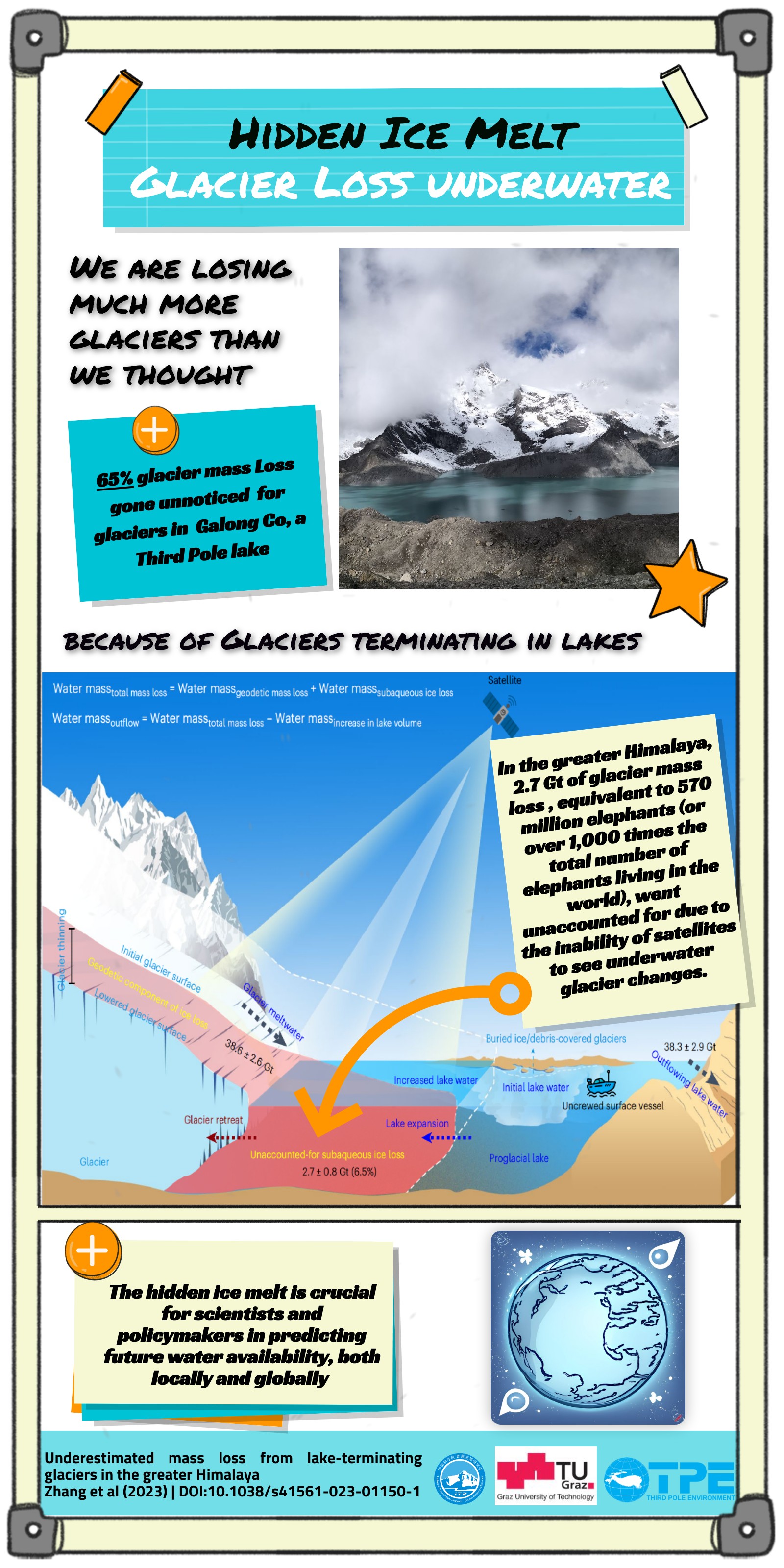Hidden Ice Melt in the Himalaya: Revealing the 'Invisible' Glacier Loss Underwater

A new insightful study reveals that the mass loss of lake-terminating glaciers in the greater Himalaya has been significantly underestimated, due to the inability of satellites to see glacier changes occurring underwater, leading to critical implications for the region's future projection of glacier disappearance and water resources. The research, which combines multi-temporal satellite data with bathymetric measurements, offers valuable insights into the growing issue of subaqueous mass loss in the Himalaya.
Published in Nature Geoscience, the study conducted by an international team including researchers from the Chinese Academy of Sciences, Graz University of Technology, Austria, University of St Andrews, UK and Carnegie Mellon University, USA demonstrates that a previous assessment underestimated the total mass loss of lake-terminating glaciers in the greater Himalaya by 6.5%. The most significant underestimation of 10%, occurred in the central Himalaya, where glacial lake growth has been the most rapid. A particularly interesting case is Galong Co in this region, with a high underestimation of 65%.
Proglacial lakes have increased
This oversight was largely due to the limitations of satellite imaging in detecting underwater changes, which has led to a knowledge gap in our understanding of the full extent of glacier loss. From 2000 to 2020, proglacial lakes in the region increased by 47% in number, 33% in area, and 42% in volume. This expansion resulted in an estimated glacier mass loss of around 2.7 Gt, equivalent to 570 million elephants, or over 1000 times the total number of elephants living in the world. This loss was not considered by previous studies as the utilized satellite data can only measure the lake water surface but not the ice underwater replaced by water.
"These findings have important implications for understanding the impact of regional water resources and glacial lake outburst floods" says lead author ZHANG Guoqing from the Institute of Tibetan Plateau Research, Chinese Academy of Sciences. "By accounting for the mass loss from lake-terminating glaciers, we can more accurately assess the specific annual mass balance of these glaciers compared to land-terminating ones, which further highlights the accelerated glacier mass loss across the greater Himalaya."
A global understanding is necessary
The study also highlights the need to understand the mechanisms driving glacier mass loss and the underestimated mass loss of lake-terminating glaciers globally, which is estimated to be around 211.5 Gt, or roughly 12%, between 2000 and 2020. "This emphasizes the importance of incorporating subaqueous mass loss from lake-terminating glaciers in future mass-change estimates and glacier evolution models, regardless of the study region," explains co-corresponding author Tobias Bolch from Graz University of Technology, Austria.
"In the long run, we expect mass loss from lake-terminating glaciers to continue being a major contributor to total mass loss throughout the twenty-first century as glaciers with significant mass loss may disappear more rapidly compared to existing projections," adds David Rounce, another co-author from Carnegie Mellon University, USA.
“By more accurately accounting for glacier mass loss, researchers can better predict future water resource availability in the sensitive mountain region,” said co-author YAO Tandong, who also co-chairs Third Pole Environment (TPE), an international science program for interdisciplinary study of the relationships among water, ice, climate, and humankind in the region and beyond.
Would you like to receive the latest stories, news, research stories, interviews or blog posts from TU Graz directly on your smartphone or in your email inbox? Subscribe to the TU Graz Telegram newsletter free of charge.
Kontakt
Tobias Bolch
Univ.-Prof. Dr.rer.nat.habil.
TU Graz | Institute of Geodesy
Phone: +43 316 873 6848
Mobile: +43 667 7774986
tobias.bolch@tugraz





